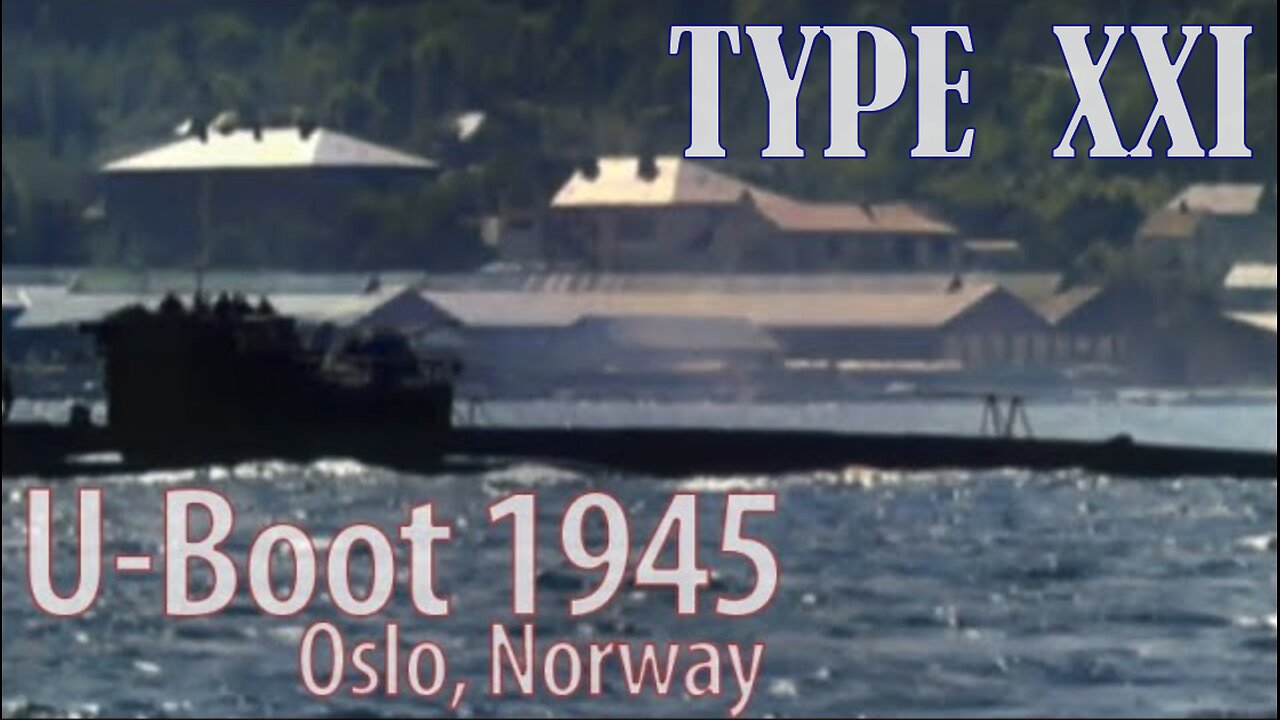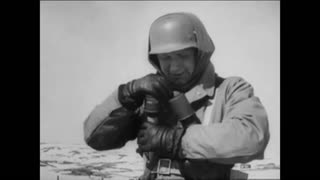Premium Only Content

Type XXI (Type 21) German U-Boot FOOTAGE from Operation Pledge - Oslo Norway, 1945
🔥PREVIEW ALL YOUTUBE VIDEOS
www.Patreon.com/Military1945
GERMAN SURRENDER
Episode № 2
Military1945
Episode № 278
Be sure to give this video a THUMBS UP! Best way to support the channel!
SUBSCRIBE to M1945
Type XXI submarines were a class of German diesel–electric Elektroboot (German: "electric boat") submarines designed during the Second World War. One hundred and eighteen were completed, with four being combat-ready. During the war only two were put into active service and went on patrols, but these were not used in combat.
They were the first submarines designed to operate primarily submerged, rather than spending most of their time as surface ships that could submerge for brief periods as a means of escaping detection. They incorporated many batteries to increase the time they could spend submerged, to as much as several days, and they only needed to surface to periscope depth for recharging via a snorkel. The design included many general improvements as well: much greater underwater speed by an improved hull design, greatly improved diving times, power-assisted torpedo reloading and greatly improved crew accommodations. However, the design was also flawed in many ways, with the submarines being mechanically unreliable and, according to post-war analysis, vulnerable to combat damage. The Type XXI submarines were also rushed into production before design work was complete, and the inexperienced facilities which constructed the boats were unable to meet necessary quality standards.
The main features of the Type XXI were the hydrodynamically streamlined hull and conning tower and the large number of battery cells, roughly triple that of the Type VII submarine. This gave these boats great underwater range and dramatically reduced the time spent on or near the surface. They could travel submerged at about 5 knots (9.3 km/h; 5.8 mph) for about 75 hours before recharging batteries, which took less than five hours using the snorkel due to the new super-charged diesel engines. Being designed primarily for submerged use, the Type XXI's maximum surface speed (15.6 knots) was lower than that of the Type IX (18.2 knots) but its submerged speed was more than twice that of the Type IX (17.2 knots versus 7.7 knots) because they were equipped with much more powerful electric drive motors and had less drag.
The Type XXI was also much quieter than the VIIC, making it more difficult to detect when submerged, and the design eliminated protruding components that had created drag in earlier models. The new, streamlined hull design allowed submerged speed of 17.2 kn (19.8 mph; 31.9 km/h), versus 7.6 kn (8.7 mph; 14.1 km/h) for the Type VIIC. The ability to outrun many surface ships while submerged, combined with improved dive times (also a product of the new hull form), made the Type XXI much more difficult to pursue and destroy. It also provided a sprint ability when positioning itself for an attack. Older boats had to surface to sprint into position. This often revealed a boat's location, especially after aircraft became available for convoy escort. The Type XXI was also equipped with a pair of electric "creep motors" for silent running.
The Type XXI was equipped with six bow torpedo tubes (instead of the more common four in German submarines) and carried 23 torpedoes. It featured an electric torpedo-reloading system that allowed all six bow torpedo tubes to be reloaded faster than a Type VIIC could reload one tube. The Type XXI could fire 18 torpedoes in less than 20 minutes. The class also featured a very sensitive passive sonar for the time, housed in the "chin" of the hull.
-
 8:37
8:37
Military1945
5 months agoVolunteer Norwegian Legion - Narvik - Lebensborn - Finnish Winter War - Josef Terboven - Waffen SS
2301 -
 LIVE
LIVE
JuicyJohns
2 hours ago $0.64 earned🟢#1 REBIRTH PLAYER 10.2+ KD🟢
153 watching -
 LIVE
LIVE
Law&Crime
1 hour ago $0.63 earnedLIVE: Adelson Matriarch Murder Trial — FL v. Donna Adelson — Day 3
170 watching -
 LIVE
LIVE
Major League Fishing
4 days agoLIVE! - Fishing Clash Team Series: Challenge Cup - Day 3
219 watching -
 27:39
27:39
Crypto.com
1 hour ago2025 Live AMA with Kris Marszalek, Co-Founder & CEO of Crypto.com
5.35K -
 LIVE
LIVE
Surviving The Survivor: #BestGuests in True Crime
1 hour agoCourt Stream: Donna Adelson Trial DAY 3 of Testimony
81 watching -
 LIVE
LIVE
Wendy Bell Radio
6 hours agoWhat Hill Will Democrats Choose To Die On?
8,060 watching -
 LIVE
LIVE
LFA TV
4 hours agoLFA TV ALL DAY STREAM - TUESDAY 8/26/25
5,092 watching -
 1:15:15
1:15:15
JULIE GREEN MINISTRIES
4 hours agoTHE CIA HAS BEEN A GIANT IN THIS LAND THAT WILL BE TAKEN OUT
91.4K139 -
 3:58:26
3:58:26
The Bubba Army
1 day agoBURN The FLAG, Go to JAIL! - Bubba the Love Sponge® Show | 8/26/25
68.5K29